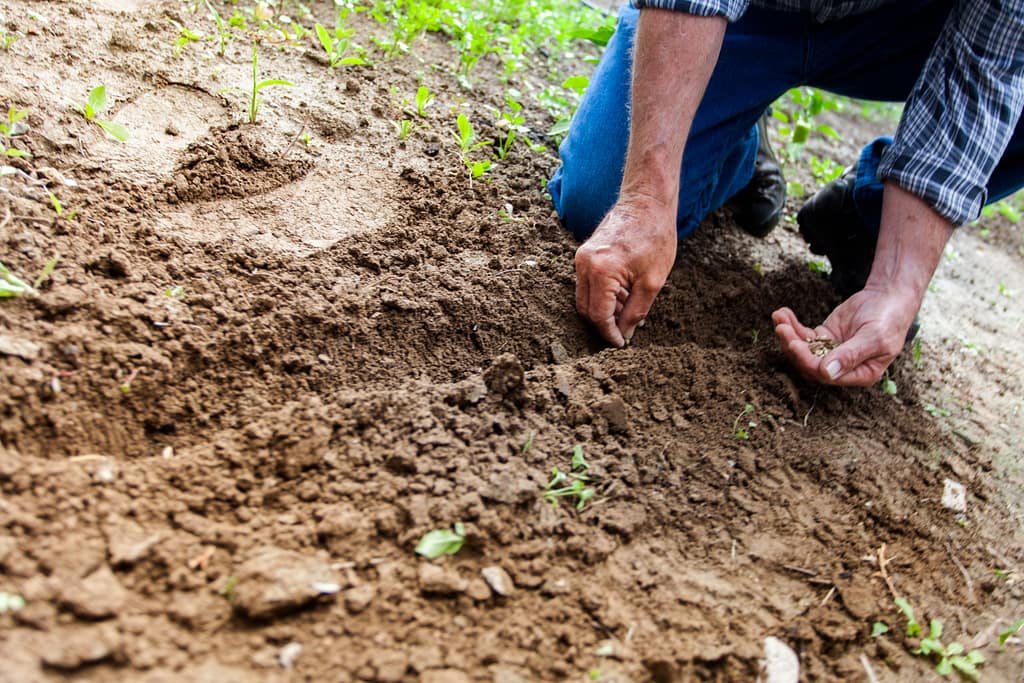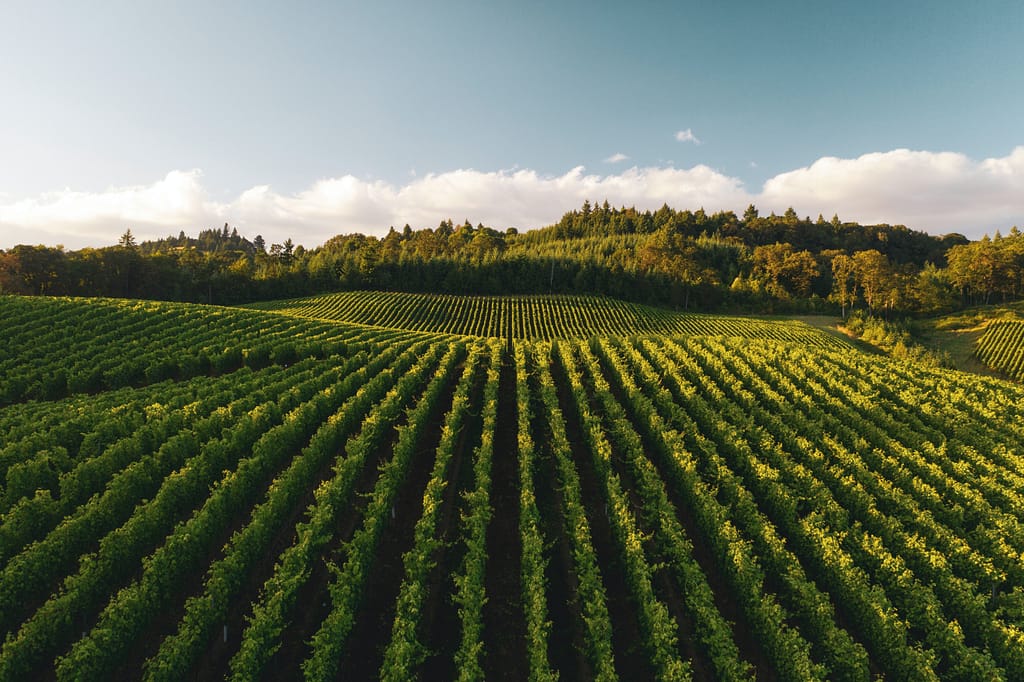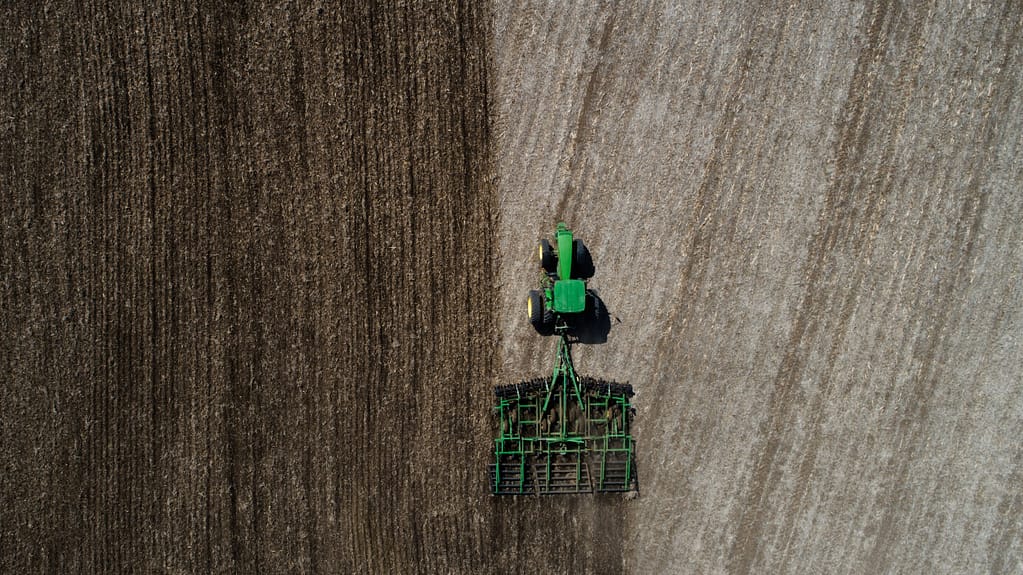When it comes to the question of making our food systems more sustainable, organic farming is something of a controversial answer.
Although its core objective of eliminating pesticides from food production delivers a host of benefits compared to conventional agriculture, critics point to a variety of other challenges it can present — such as requiring ever-more land to be converted from nature to farmland to produce the same amount of food.
A meta study published in Nature in 2016 found that organic yields are on average 25% lower compared to conventional yields. With the global population projected to surge to 10.9 billion by 2100, lower yields could potentially lead to increased land use and deforestation unless the more basic interpretations of organic farming are improved. These studies do tend to assume the same crops in the same farms, which is quite reasonable in the short term but negates the potential of organic farming to grow some crops better than others, or to rehabilitate the soil for future production. So, is organic worthwhile?
For Brian Shaw, Metabolic’s Agrifood & Biodiversity Lead, the main problem with most organic food production is not that it is less productive than conventional agriculture or leading to potentially more imports — but rather that it does not go far enough in addressing the problems with the status quo.
“It’s a step in the right direction, but likely not ambitious enough for us to go where we need to go,” he says. “Something can be certified organic but still be traveling thousands of kilometers, for instance. Everything being produced organically might not be sufficient to bring us to the state of nature that we need. We need to think about more complex systems, not just reducing pesticides, but moving more into a polyculture system — managing things in a more regenerative way.”

Organic farming does, however, provide a solid foundation for where the food system needs to go. So what is it exactly?
Organic farming defined
It is commonly accepted that organic produce and other ingredients are grown without the use of pesticides, synthetic fertilizers, sewage sludge, genetically modified organisms, or ionizing radiation. Animals that produce meat, poultry, eggs, and dairy products are not given antibiotics or growth hormones.
In a sense, organic farming is about a return to farming’s roots. Up until the 20th century, all food was produced “organically.” With the industrialization of the agriculture sector, synthetic fertilizer, chemical pest-control practices, and GMOs were introduced to increase productivity.
In the 1940s a counter-movement arose that reframed the farm as an organism, requiring a holistic, ecologically balanced approach to farming.
The sector is largely self-regulating, and so there is no universally accepted definition of organic food. Worldwide, there are many different organic certification schemes, including the EU regulation on organic farming, with various restrictions and requirements.
Shaw argues that the lack of a clear definition is a big part of why it is hard to deliver a verdict on the merits of going organic. “There are a bunch of different certification standards for organic, and these are very, very different,” he says.

Trade-offs to consider
Although most organic farming tackles the environmental harm of pesticides, there are plenty of other green challenges to consider. Sometimes addressing one issue can exacerbate another.
A 2019 study published in Nature Communications assessed the greenhouse gas impacts of converting food production in England and Wales to organic farming.
The study found that overall, organic farming reduces some emissions of farms by reducing the need for fertilizers — which require quite a lot of greenhouse gases to produce — and by sequestering more carbon in the soil.
That, however, is outweighed by reducing per-acre productivity, potentially infringing on land reserved for biodiversity, like natural parks. If land is not available, more food would need to be imported to compensate, meaning more emissions from the transport of this food, as well as the intensive farming practices that would still take place elsewhere. The study calculated that the total emissions would increase, because of this transportation.
Although this outcome is heavily debatable, it is always a risk to focus on any one solution, such as organic vs non-organic farming, or on one impact area, such as pesticides or even emissions. Such an approach risks shifting the burden from one problem to another, for example by decreasing emissions while exacerbating other planetary boundaries, or improving soil health while emitting more emissions.
So rather than going all-in on addressing one type of environmental problem, it is important to consider the broader trade-offs by applying a systemic approach.

Metabolic Biodiversity & Agrifood Systems Consultant Louisa Durkin argues that agriculture needs to address multiple environmental impacts at once.
“Organic agriculture is only partially transformative, and rather than solving the structural problems with extractive, conventional agriculture, it removes one of the problematic inputs — pesticides,” she says. “But there are many other structural issues with extractive, conventional agriculture that are not addressed with the organic certification, such as tilling, lack of diversity of species, and synthetic inputs.”
A regenerative approach is needed
This is not a knock on organic farming. At the time organic farming methods were gaining popularity in the mid-20th-century, the focus of many environmentalists was very much about reducing the harm inflicted on the environment. By that measure, it works. Organic farming does reduce the harm to the environment.
It is quite telling that the EU is hoping to convert one-quarter of agricultural land to be “managed organically” by 2030. The EU’s rationale is that organic farming is better suited to protecting biodiversity by reducing the reliance on pesticides in particular. This target now forms part of the European Green Deal and the Farm to Fork strategy.
But as things stand in the 21st century, the world is approaching the limits of what it can handle, and agriculture needs to not just reduce the damage it inflicts, but actually heal the land, without compounding any other global issues.
That’s where regenerative agriculture comes into play, according to Durkin.
“It’s growing food and agricultural products in a way that mimics nature,” she says. “Moving from extracting nutrients and minerals from the soil… to increasing the biology in the field and building soils.”

Like organic farming, regenerative agriculture is a loosely defined set of concepts that can vary depending on where you look, but ultimately it seeks to reverse negative impacts rather than eliminate them.
“I think that a lot of the problems with extractive agriculture have the potential to be reversed by changing to a regenerative farming system,” says Durkin. “But, this can only be realized if regenerative agriculture is looked at as a landscape management exercise that aims to increase local biodiversity, increase soil fertility, empower local communities, and fundamentally try to farm in nature’s form.”
Many of these regenerative solutions overlap with and build on the principles of organic farming to make sure that soils are being actively restored.
Leaving land dormant between cash-crop seasons qualifies as organic farming, but some practitioners go the extra mile through pioneering solutions that also qualify as regenerative, such as by applying diverse cover crop mixes to increase organic matter and soil biology, produce natural fertilizer, and reduce erosion.
Regenerating the biology in the soil using techniques such as cover cropping also helps sequester carbon, addressing the challenge of climate change while simultaneously preserving nutrients in the soil.

Affordable eating is the goal
A study comparing regenerative cultivation of corn in the United States versus conventional farming approaches found that although the yield was 29% lower, the regenerative farms were 78% more profitable because farmers did not have to spend as much on their operations.
That is because regenerative agriculture requires less external inputs such as fertilizer due to improved soil organic matter.
Unlike organic farming, which leans towards the traditional, regenerative agriculture is also faster to adopt 21st-century solutions. Sensor technology can help farmers practice precision cultivation, while satellite crop health imagery can allow growers to examine crop health at each growing stage and to map out fixed trails for transport to conduct tillage, crop care, and harvesting — minimizing soil load and preserving soil structure on the majority of the land.
With the right combination of techniques, the total farm yield can even be maintained by improving biodiversity on-farm through measures such as adding wildlife habitat to farmland, reducing soil tillage, and enriching soil with organic matter.

Shaw says that by fine-tuning some of these aspects through regenerative solutions, the global system can make the most of the benefits that organic farming brings.
“To have a major role in the transformation of our food system, organic food needs to be more affordable,” says Shaw. “It’s a lifestyle choice now which is a barrier to really scaling it up. But organic farming is a good starting place to build on.”
If the food system needs to become regenerative, what are the barriers? While some techniques such as cover cropping are generally agreed to be part of “regenerative agriculture,” the definition remains murky, and many other beneficial practices are in a grey area. Organic farming may not have a specific definition, but certifications at least provide for a clear understanding of what the required practices are.
Regenerative farming is an ideal, but it is missing the concrete structures that could bring it to life: legal definitions, certifications, and clear methods of measurement and monitoring.
On the one hand, regenerative farming is a combination of individual practices like agroforestry, intercropping, and minimal soil disturbance. Making it a reality would then be a matter of integrating these techniques, one farm at a time. On the other hand, perhaps the definition should be ingrained in the goals of regenerative farming: to rehabilitate the soils and improve above-ground biodiversity.




